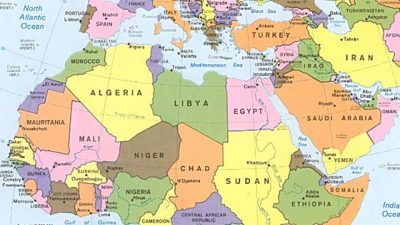Being pretty comes with a cost to the environment. Buying stuff, travelling places, eating things from far away. The cost of fuel, fertilisers, packaging, servers – producing anything has a cost for our planet. Years ago cosmetic companies needed to find a way to veer away from animal testing. After animal testing was over it was parabens, preservatives and microplastics. Today the Estée Lauder Companies is staying in step with the times by going climate neutral.
“In this decisive decade for climate action, we will continue to accelerate efforts to ensure a healthy, beautiful planet for generations to come,” said Fabrizio Freda, President and CEO of the companies Estée Lauder manages.
Who is Estée Lauder today?
The company’s products are sold in approximately 150 countries and territories under brand names including: Estée Lauder, Aramis, Clinique, Prescriptives, Lab Series, Origins, Tommy Hilfiger, M·A·C, Kiton, La Mer, Bobbi Brown, Donna Karan New York, DKNY, Aveda, Jo Malone London, Bumble and bumble, Michael Kors, Darphin, Tom Ford, Smashbox, Ermenegildo Zegna, AERIN, RODIN olio lusso, Le Labo, Editions de Parfums Frédéric Malle, GLAMGLOW, KILIAN PARIS, BECCA, Too Faced and Dr. Jart+.
To achieve its Net Zero emissions and RE100 goals by 2030, Estée Lauder reduced its carbon footprint by investing in bringing renewable energy to the grid. The company signed a Virtual Power Purchase Agreement (VPPA) for 22 megawatts of wind power from the Ponderosa wind farm in Oklahoma to cover more than half of the company’s electricity footprint with renewable energy technologies.

The niece of a Hungarian chemist, Estée Lauder, nee Mentzer, was trained in the art of face creams at an early age. She founded what is today a global brand, still run by the family.
Estée Lauder also installed solar energy panels on its factories and offices around the world facilities around the world, bringing the company’s global total to more than 5 MW of solar capacity.
To cover any remaining annual emissions from operations, Estée Lauder bought carbon offsets from the Massachusetts Tri-City Forestry project in North America, which protects 6,500 acres of public forestland from significant commercial timber harvesting and ensures long-term sustainable management of the forest. Some proponents to carbon offsets, believe planting trees, not burying carbon in direct air capture, is the only sustainable and long-term solution to climate change.
“We congratulate The Estée Lauder Companies on their fantastic work to switch to renewable electricity globally,” said Helen Clarkson, CEO of the Climate Group. “When large companies like The Estée Lauder Companies set their sights on an ambitious target, they can achieve huge change at a rapid pace. This is exactly the sort of leadership we need to see in the climate decade, as we work to halve global emissions.”
Estée Lauder’s big plan for greenhouse gases
- To reduce emissions 50% by 2030 from a 2018 base year. This target is consistent with reductions required to keep warming to 1.5°C, the most ambitious goal of the Paris Agreement.
- To reduce GHG emissions from purchased goods and services, upstream transportation and distribution, and business travel 60% per unit revenue over the same timeframe.
What other beauty and healthcare leaders are doing progressive steps to mitigate climate change and future-proof their business? I Googled the well-known Body Shop – an early brand that said squarely we will not test on animals in the 90s, and the link that was supposed to take me to “their commitment to enrich our planet” led to a 404 error, which offered a link to “blow my mind”. Pressing on that link I was redirected to a Black Friday Sale to buy buy buy. Mind blown. Or that’s what happens when you hire an SEO manager, not a publicist, to manage your online environment.
The Body Shop, once the pioneering manufacturer and retailer of environmentally-friendly products, has now been taken over by L’Oréal who are in turn owned by Nestlé, notorious for its scandals: Child labor, unethical promotion, manipulating uneducated mothers, pollution, price fixing and mislabeling and tainted products… and notorious for undermining breastfeeding are just some of the problems that Nestle has come under fire for.
Estée Lauder is still a family owned brand, the grand-children of the woman you see in the photo above. Maybe that is the difference?
Update 2022:
The Estée Lauder Companies (ELC) has expanded its global renewable energy portfolio with an on-site solar installation at its new, state-of-the-art fill and assembly manufacturing facility, Hillmount, in Markham, Ontario. The rooftop installation makes Hillmount the company’s first Canadian facility to use on-site solar power, bringing the company’s total solar capacity to 5.7 MW worldwide and helping to further its climate action strategy.
Hillmount’s solar array will also help reduce the facility’s carbon emissions and bring additional renewable energy online. The installation will produce 730 MWh of solar electricity annually from approximately 1,600 panels and generate 10% of the annual estimated Hillmount plant demand — the equivalent of yearly electricity for 84 homes. On a cloudless, sunny day, the solar array can generate approximately 50% of the real-time plant demand. The array will also drive progress toward LEED (Leadership in Energy and Environmental Design) Silver certification for the facility.

ELC employees on the rooftop of the Hillmount facility in Toront
“Our Hillmount facility has sustainability at its core and our employees’ incredible passion and commitment have been integral to our achievements in this area,” said David Clare, Vice President, Supply Chain, Canada. “We’re very proud that our solar array will help contribute to the positive environmental impact of our global manufacturing footprint and help ELC achieve its broader climate goals.”



